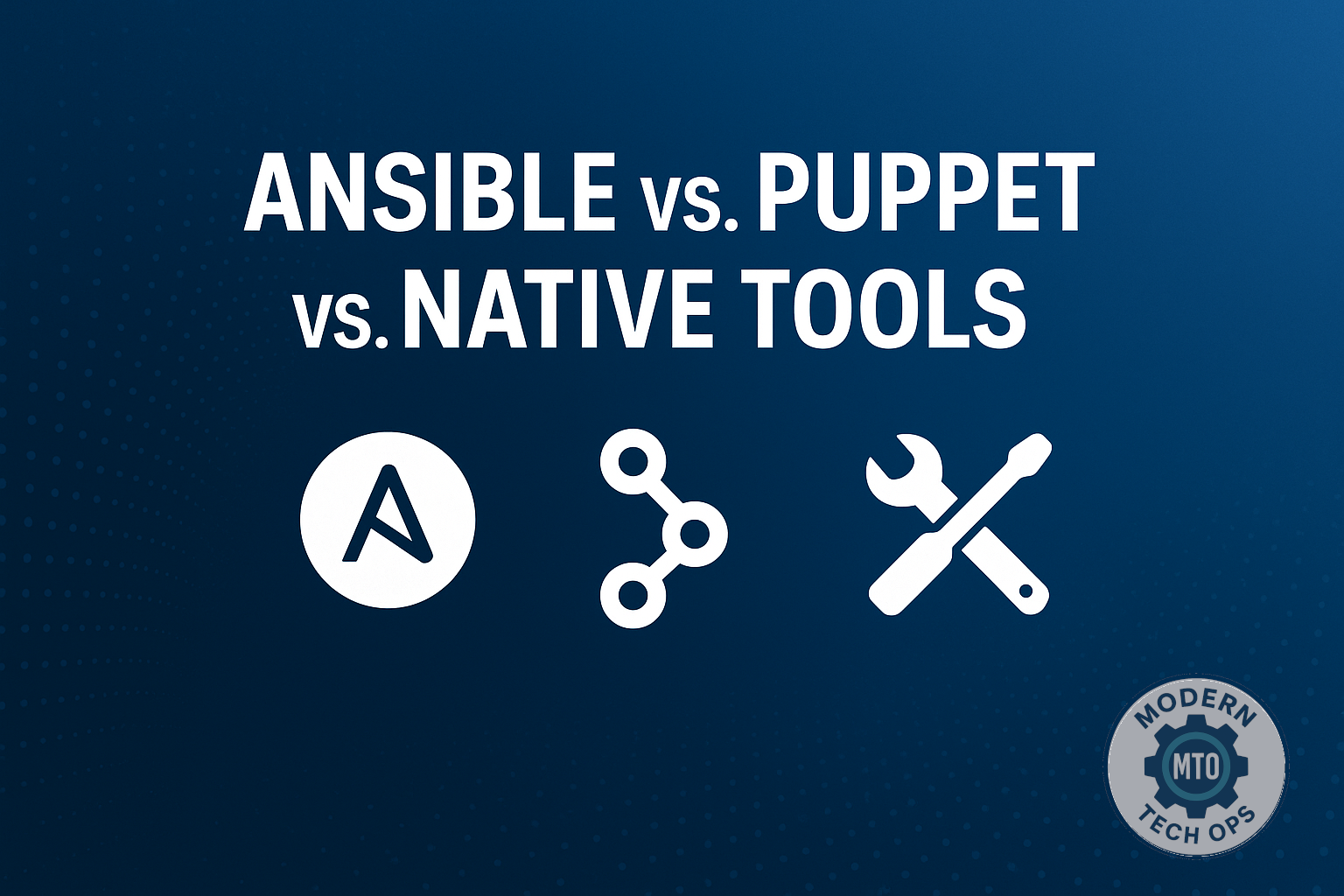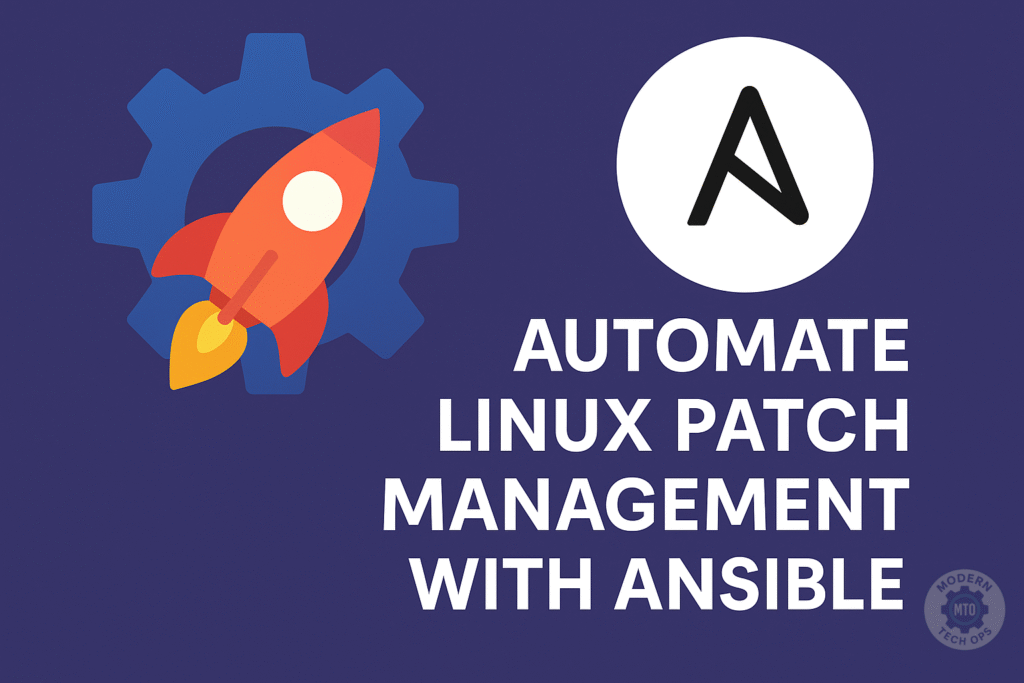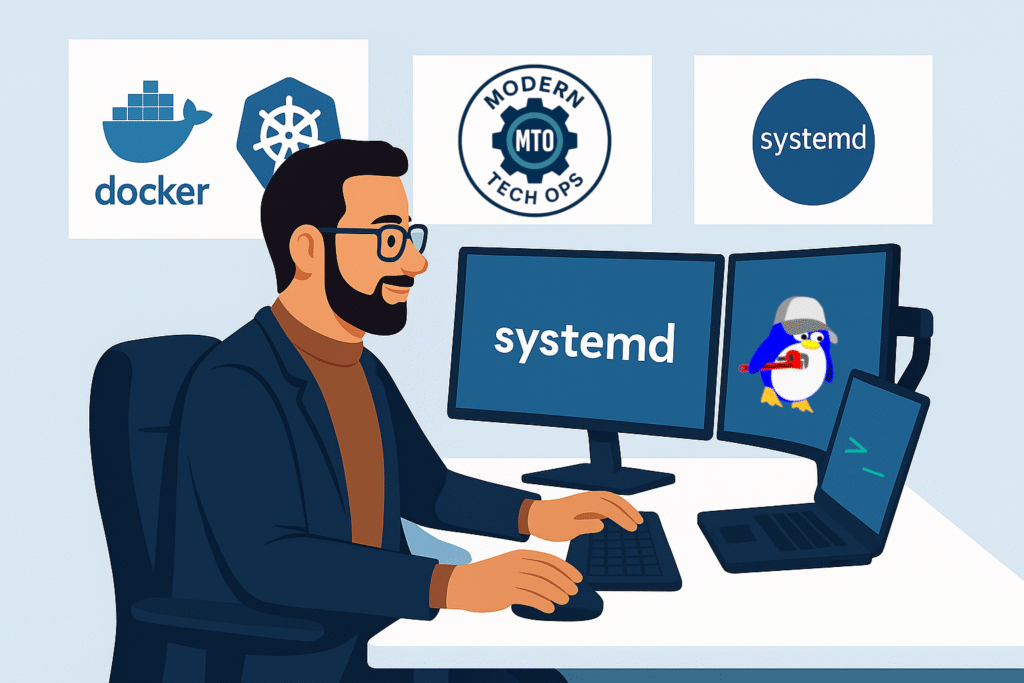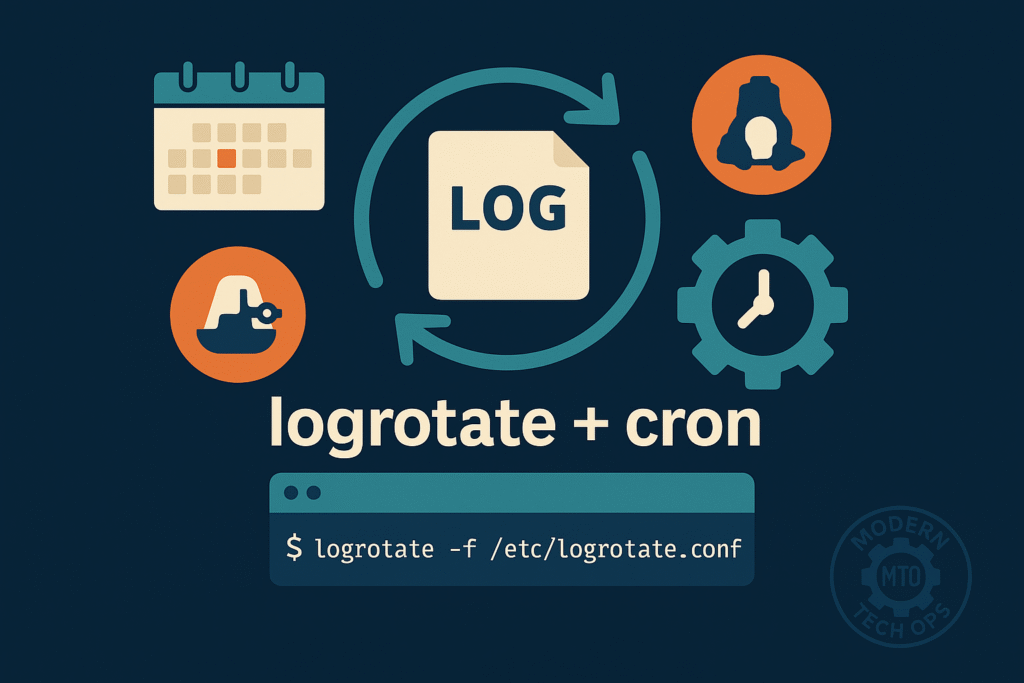Ansible vs. Puppet vs. Native Tools: Which Automation Approach Is Right for You?

Last Updated: July 25, 2025
Automation is at the heart of modern infrastructure and operations. But with so many tools, (each promising to solve your problems) how do you choose the right one?
In this article, we compare Ansible, Puppet, and classic native tools (like Bash and cron), then briefly highlight other automation powerhouses you might run into, such as Chef, SaltStack, Terraform, and Jenkins. The goal: give you a roadmap for making smart decisions, not just theory.
- You know basic Linux/command line skills
- You’re familiar with scripting or basic programming
- You want actionable, real-world guidance
| Feature | Ansible | Puppet | Native Tools |
|---|---|---|---|
| Learning Curve | Low-Medium | Medium-High | Low |
| Agent Needed | No | Yes | No |
| Idempotency | Yes | Yes | Manual |
| Cloud Ready | Yes | Yes | Sometimes |
| Community | Strong | Strong | Variable |
| Best For | Fast setup, cloud/hybrid | Large fleets, policy | Small tasks, glue code |
- You need to automate tasks across many servers quickly
- Your team wants simple, readable playbooks under version control
- You don’t want to install agents or extra software
When Puppet is Best:
- You’re running a large fleet and need to enforce system state automatically
- You require strong policy as code and compliance controls
- You have existing investment in Puppet modules and infrastructure
When Native Tools Shine:
- You’re running one-off jobs or integrating with vendor APIs
- You have environments with strict security or software policies
- You need rapid prototyping or troubleshooting
- hosts: web
tasks:
- name: Install Nginx
apt:
name: nginx
state: presentpackage { 'nginx':
ensure => installed,
}
service { 'nginx':
ensure => running,
enable => true,
}sudo apt update && sudo apt install -y nginx
sudo systemctl enable nginx --now| Situation | Recommended Tool | Why |
|---|---|---|
| Quick, repeatable cloud setup | Ansible | No agents, easy YAML syntax |
| Enforcing config at scale | Puppet | State enforcement, compliance |
| One-off task or prototype | Native Tools | No overhead, fastest result |
When Should You Use These Other Tools?
- Chef and SaltStack: Used as alternatives to Ansible and Puppet, especially in larger, mixed environments or where Python or Ruby skills are strong.
- Terraform: Use when your main challenge is provisioning cloud resources, not managing packages and configs on servers.
- Jenkins: Use when you need to automate build, test, and deployment pipelines (not infrastructure setup).
If your use case focuses on CI/CD or cloud resource provisioning, check out these tools. Each has its own strengths and target scenarios.
- Use Ansible for agentless, quick-start automation across hybrid and cloud environments.
- Choose Puppet when you need to enforce policy and manage large, complex fleets.
- Stick with native tools for small jobs, rapid troubleshooting, or when overhead must be minimal.
Chef, SaltStack, Terraform, and Jenkins all have a place in the automation ecosystem (consider them as your needs evolve).
Want a deep dive into Terraform, Jenkins, or another tool? Let us know in the comments, or subscribe for updates on the latest ModernTechOps guides!
- Try out the sample playbooks and scripts above
- Experiment in a test environment before rolling into production
- Bookmark this post as a reference or share with your team
Did this guide help you? What would you add or change? Drop a comment below!
Related Posts




